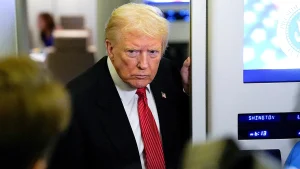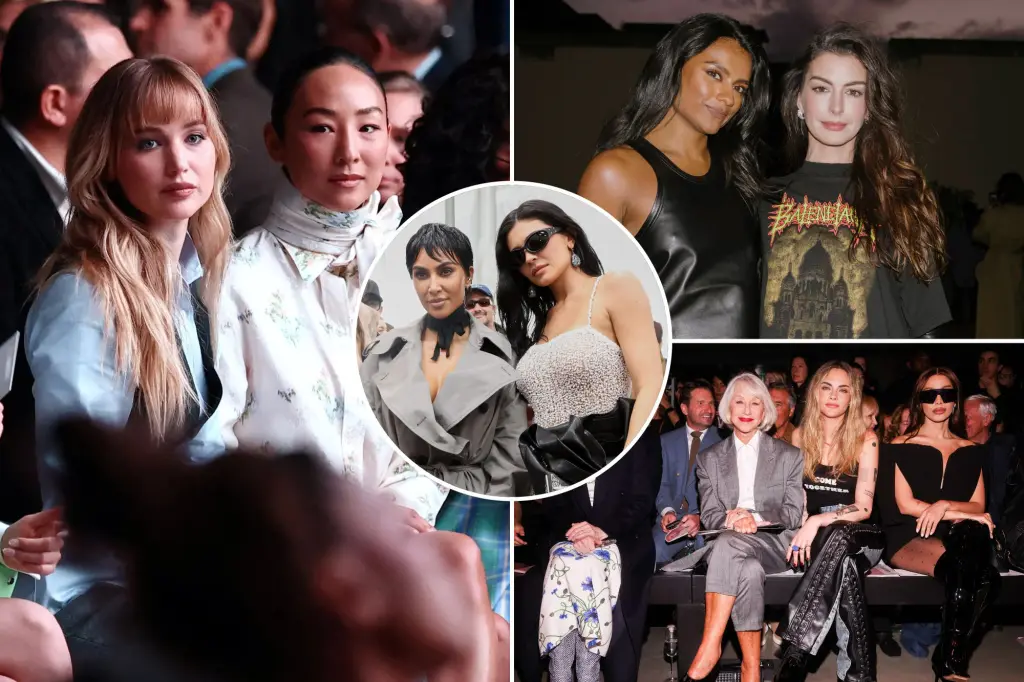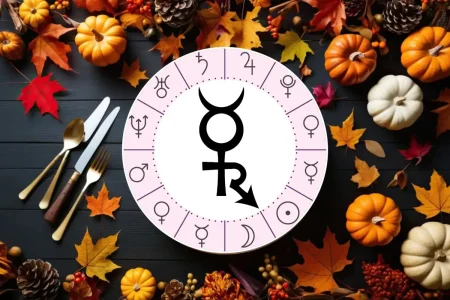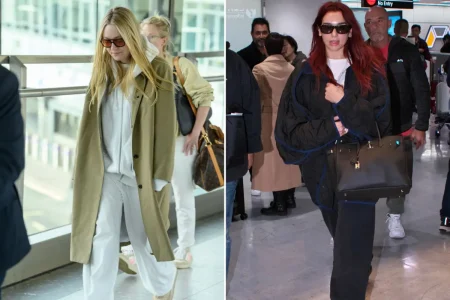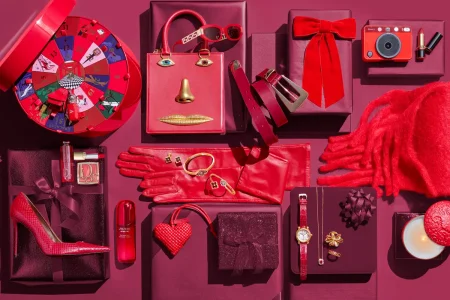When Celebrity Overshadows Couture: Paris Fashion Week’s Star-Studded Spectacle
In the hallowed streets of Paris this fall, an unexpected shift occurred during the prestigious Fashion Week. The spring/summer 2026 shows, which concluded on October 7 after nine days of high-end presentations, found themselves in an unusual predicament: the clothes weren’t the main attraction. Unlike last year, when Rick Owens’ futuristic balaclavas, Dior’s athletic Grecian goddesses, and Miu Miu’s artfully disheveled bandage aesthetic dominated conversations and inspired social media trends, this season witnessed a dramatic power reversal. The true spectacle unfolded not on the runway but in the front row seats, where celebrities commanded attention with such gravitational force that the actual fashion collections seemed almost secondary. This phenomenon wasn’t isolated to Paris—it echoed consistently throughout fashion month in Milan and New York as well, creating what many industry insiders have described as “the same circus, different tent,” where the boundary between fashion show and celebrity showcase has blurred beyond recognition.
The transformation of fashion’s power dynamics has been remarkable to witness. Where once legendary designers like Hubert de Givenchy shared equal billing with their muses like Audrey Hepburn, or when Karl Lagerfeld’s commanding presence could overshadow even the Kardashians, today’s landscape tells a different story. Across the major fashion capitals, attendees and online followers struggled to name standout designs while effortlessly recalling who wore what in the audience. Zendaya captivated all eyes in a metallic bow-adorned mini coat dress at Louis Vuitton, while Kylie Jenner turned Miu Miu into her personal showcase in alluring lace. Perhaps the most meta moment of the entire fashion month occurred at Dolce & Gabbana, where Meryl Streep appeared in full “Devil Wears Prada 2” character alongside co-star Stanley Tucci, creating a surreal face-off with the real-life Anna Wintour. These moments tell a story of a fundamental shift in the industry: it’s increasingly less about the artistic vision displayed on the catwalk and more about who’s been paid to occupy the front row chairs.
Saint Laurent’s spring show perfectly embodied this new reality when it unfolded beneath the iconic Eiffel Tower. While designer Anthony Vaccarello undoubtedly presented a thoughtful collection, public attention fixated almost exclusively on the celebrity attendees. Hailey Bieber, Zoë Kravitz, and Charli XCX created an immediate sensation by appearing in frilly, fairy-core “booty shorts” that simultaneously captured the imagination of social media and foreshadowed upcoming street style trends. The actual runway presentation, despite occurring in one of fashion’s most revered settings, became almost incidental to the star-studded spectacle unfolding in the audience. This dynamic repeated at Balenciaga, where Anne Hathaway arrived in a custom high-low graphic tee with a dramatic floor-length back inspired by the collection, while Meghan Markle made her Paris Fashion Week debut in an elegant white cape over silky trousers. Their appearances generated such intense excitement that the actual runway presentations seemed to fade into the background of public consciousness.
Designers themselves appear to be adapting to this celebrity-centric reality, sometimes reluctantly and sometimes strategically embracing it. Demna Gvasalia’s highly anticipated debut at Gucci—after his departure from Balenciaga—represented what should have been Milan’s defining fashion moment. He unveiled his first collection through an artful short film titled “The Tiger,” which cleverly referenced the dramatic “House of Gucci” narrative while showcasing his subversive aesthetic and vision for the brand’s future. Yet despite the creative sophistication of this presentation, the conversation quickly pivoted toward the glamorous celebrities associated with the brand. Gucci’s market success has become increasingly dependent on strategic celebrity affiliations, exemplified by K-pop ambassador Jin of BTS, whose presence alone generated enormous media value and online brand mentions. This suggests a profound transformation in how luxury fashion houses measure success—not primarily through critical acclaim for design innovation but through celebrity-driven visibility and engagement.
The celebrity-fashion relationship has evolved far beyond traditional endorsements into something more symbiotic and structurally significant. Sydney Sweeney, still ascending the Hollywood hierarchy, is reportedly venturing into the lingerie business with backing from Bezos-linked investors. While celebrity product launches have long been standard practice for established stars like the Kardashians and Jenners, Sweeney’s move represents a bold step for an actor still building her brand. This development highlights how the traditional boundaries between fashion creator and celebrity endorser continue to dissolve. The distinction between merely lending one’s image to an established label—as with GAP’s campaign featuring K-pop group KATSEYE or the GapStudio collaboration with Gwyneth Paltrow and her daughter Apple Martin—and launching an entirely celebrity-owned fashion venture grows increasingly significant in determining who truly shapes the industry’s direction.
This Paris Fashion Week may represent a pivotal moment in fashion’s evolution, where the industry confronts a future increasingly defined not by the visionary designers who create collections but by the celebrities who wear and promote them. The irony is palpable: fashion weeks were originally conceived as industry events where designers could showcase their artistic visions and retailers could plan their upcoming inventory. Now they function as elaborate backdrops for celebrity appearances, social media moments, and brand alignments that often overshadow the actual clothing being presented. As household-name celebrities increasingly step into designer roles while established designers become supporting players in their own shows, the fashion industry faces profound questions about artistic authenticity and commercial imperatives. The clothes themselves haven’t disappeared, but they’ve been repositioned within a celebrity-industrial complex where their artistic merit often takes a backseat to their value as props in a larger celebrity performance. For an industry built on reinvention, this may simply represent fashion’s latest transformation—but one that fundamentally alters the relationship between creator, creation, and consumer in ways we’re only beginning to understand.


